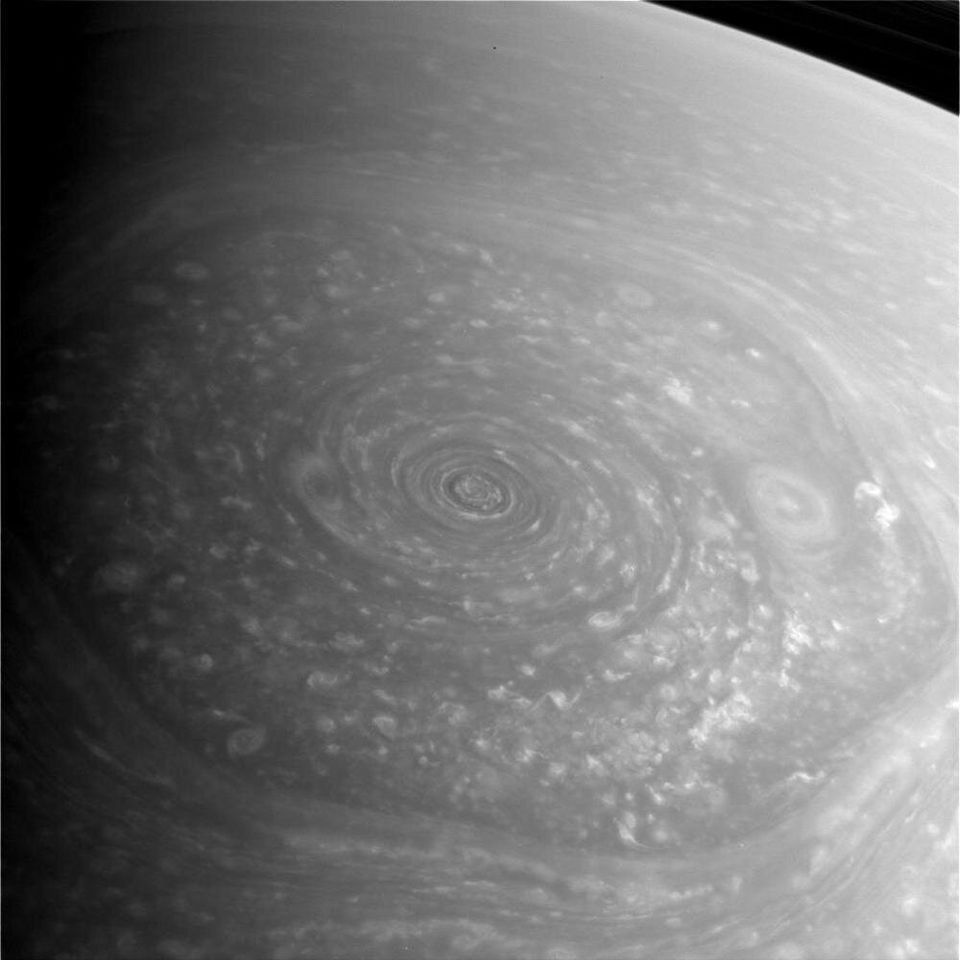
It's been nearly a decade since the Cassini spacecraft peeked in on tiny Enceladus -- and stirred up a storm.
Were those images of water, literally bursting from the thin cracks in the surface of Saturn's icy moon?
Indeed, at about 500 km in diameter -- roughly a seventh of Earth's moon -- Enceladus would prove no sleepy satellite.
Back in 2005, Cassini captured images of what appeared to be an ocean. And not just some dead, frozen block deep beneath the moon's husk, but an ocean at play, shooting jets of water vapour into space.
Publishing their results in the journal Science this week, an international team of scientists has confirmed the spacecraft's stunning suggestion -- leaving the door open on the even more tantalizing possibility of life in our solar system. At least, on the microbial level.

The ocean, sprawling over the moon's south pole, is estimated to be about eight kilometres deep, covering about as much area as Lake Superior, the BBC reports.
"It's even possible that it's global," study co-author and planetary scientist David Stevenson tells CBC'S Quirks & Quarks. "All that we can say for certain is this layer of water is thickest at the south pole."
Sheathed in white ice, Enceladus is one of the brighter shiny baubles among Saturn's 53 known moons. But its beauty is more than skin deep. While the ocean may seem entombed in ice, team leader Luciano Iess of Sapienza University of Rome, suggests it stays relatively fluid, thanks to tides -- and those tides, in turn, build friction , essentially heating the water.
“I was not surprised because we knew there was liquid water,” he said in a statement. “But quantifying the amount of water was a different story. It could have been rather shallow or a remarkable mass, like the one we have found.”
The Cassini-Huygens mission -- comprising an orbiter module (Cassini) and a probe (Huygens) is well-equipped for its exploration of Saturn's myriad moons. Since reaching Saturn in 2004, the spacecraft has been soaking up data with its powerful instruments and cameras. NASA has hailed it as "one of the most ambitious missions ever launched into space."
It's also fueling calls for a shift in our space-faring strategy, as Saturn's diminutive satellite comes into focus.
“Enceladus has the most accessible extraterrestrial habitable zone,” Carolyn Porco, leader of Cassini’s imaging team, told Wired. "This place is really where we should be going."
Also on HuffPost
